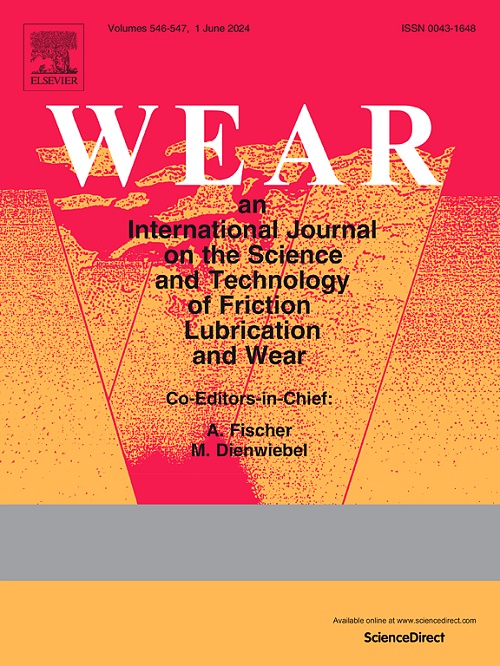Integrated approach to machinability and optimization of nitronic-50 with uncoated carbides
IF 5.3
1区 工程技术
Q1 ENGINEERING, MECHANICAL
引用次数: 0
Abstract
Nitronic-50 has been dry-turned with uncoated carbides at three distinct levels of cutting velocities, feeds and cutting depths following a face-centered central composite design. Responses in the form of tangential cutting force, tool-tip temperature, flank wear, material removal rate and surface roughness have been thoroughly studied. Wear characteristics showed prevalence of attrition, abrasion, micro-pitting, grooving and spalling as the major forms. Simulated wear was studied using Usui's tool wear criteria. Depth of cut and cutting velocity significantly influenced tangential cutting force, tool-tip temperature and MRR, while feed rate was the prime factor affecting surface roughness. Experimental outcomes showed strong agreement with predictive models, bearing low error percentages and high R-squared values validating their reliability. Further process parameters have been optimized using MCDM and hybridized MCDM integrated metaheuristic techniques. Optimization results advocate of 66.8297 m/min as cutting velocity, 0.08 mm/rev as feed and 0.1 mm as cutting depth obtained with TLBO. Least surface roughness was recorded with MOORA-based Taguchi optimized set, consisting of 100 m/min as cutting velocity, 0.08 mm/rev as feed and 0.5 mm as cutting depth, while highest material removal rate was obtained under optimized sets of MOORA or MOORA-based TLBO, both of which consisted of higher levels of parametric settings. The TLBO-optimized conditions offered reductions of up to 51.94 % in tangential cutting force, 66.67 % in tool-tip temperature, and 57.41 % in flank wear as compared to alternative optimal setups. Surface roughness was 19.64 % lower than MOORA optimization, while MRR was marginally lower, indicating productivity-tool wear trade-offs.

求助全文
约1分钟内获得全文
求助全文
来源期刊

Wear
工程技术-材料科学:综合
CiteScore
8.80
自引率
8.00%
发文量
280
审稿时长
47 days
期刊介绍:
Wear journal is dedicated to the advancement of basic and applied knowledge concerning the nature of wear of materials. Broadly, topics of interest range from development of fundamental understanding of the mechanisms of wear to innovative solutions to practical engineering problems. Authors of experimental studies are expected to comment on the repeatability of the data, and whenever possible, conduct multiple measurements under similar testing conditions. Further, Wear embraces the highest standards of professional ethics, and the detection of matching content, either in written or graphical form, from other publications by the current authors or by others, may result in rejection.
 求助内容:
求助内容: 应助结果提醒方式:
应助结果提醒方式:


